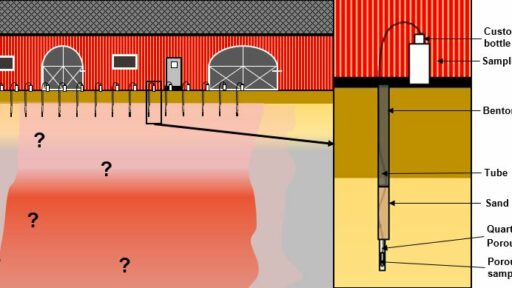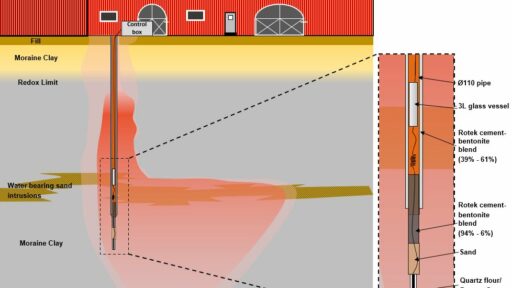In 2018 DMR bought the company Prenart, which is a more than 30 year old quality brand producing equipment for soil water sampling, producing specialized equipment for soil water sampling. Combined with DMR’s conceptual knowledgebase regarding transport of pollutants in the unsaturated zone, we are know a marked leading company, when it comes to sampling of porewater and combining it with risk assessment of organic pollutants.
Quantification of discharge from areas with soil pollution is often based on conservative estimates of porewater concentrations via chemical analysis from soil samples. This can lead to misinterpretation and biased risk assessments due to the necessary degree of conservatism in calculations. In the end this leads to increased risk and thereby potentially higher costs for further investigations and subsequently higher cleanup costs. Furthermore, it is well known, that many chemicals (like most pesticides and PFAS compounds) are extremely water soluble. This means that analysis of soil samples potentially leads to underestimation of the porewater concentration. To meet these challenges, the recommendation in most projects focused on soil and groundwater pollution and risk assessment is to measure the concentration in the phase where the chemicals spread. This means that e.g., indoor air risk must preferable be investigated in soil air or indoor air. Likewise, groundwater risk must be investigated in soil porewater and groundwater. Traditionally, groundwater risk has been based mainly on groundwater samples. But in situations with slow vertical porewater transport (like in clay) or short time between spill and sampling, the vertical fane might not have reached the groundwater table.
Overall, we use techniques, one for screening in the upper 4-5 meters of soil and one for deeper soil water sampling. The most normal approach is to apply the screening technique to localize the hotspot. This technique is cost effective, and it is possible to measure in multiple points and limit / characterize the hotspot. Once the hotspot is located, the vertical distribution can be assessed using the automated soil water sampling technique. You can find more information about each technique by visiting our links to the right of this page or contacting one of our experts below.



